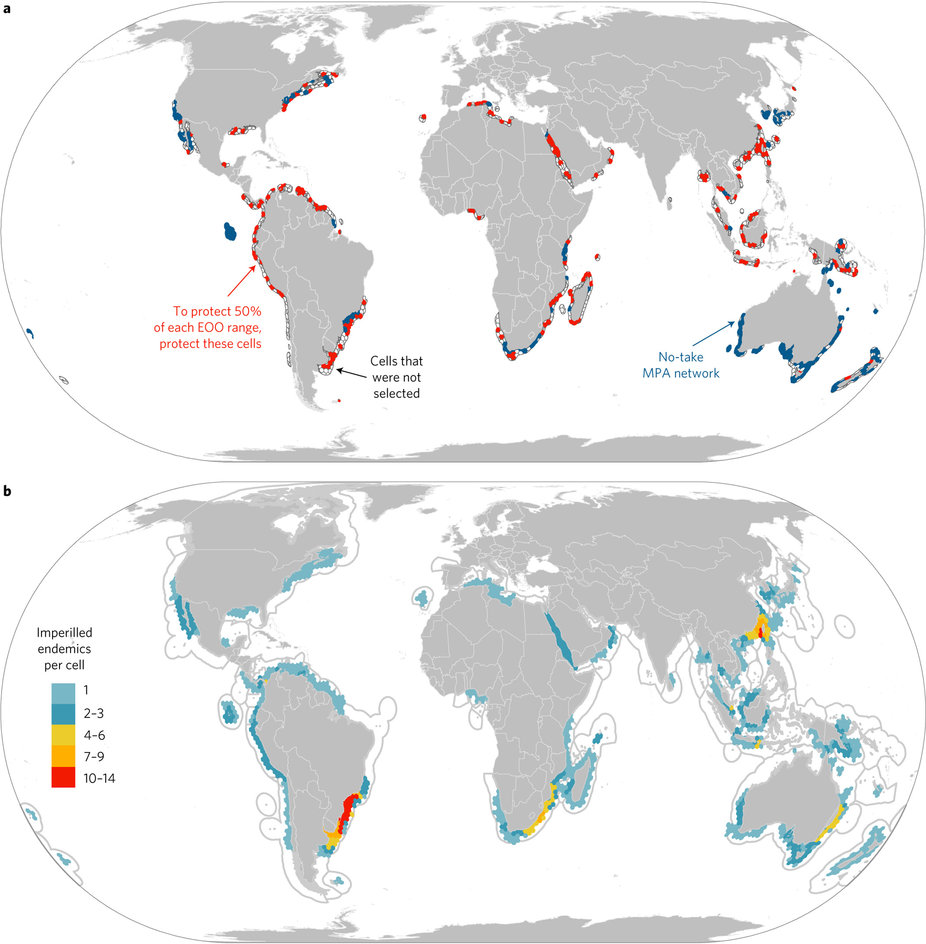Marine protected areas (MPAs) are established all over the world to help preserve imperiled species. But the process of identifying these areas doesn’t always prioritize species most at risk of extinction. A new study focuses specifically on the endangered chondrichthyans (such as sharks, rays and chimeras) and their representation in the existing MPA network. Results showed that the existing network of protected areas would only need to grow by 3% in 70 nations to cover half of the geographic range of 99 chondrichthyans at risk. Furthermore, the majority of endangered species are concentrated in areas controlled by 12 nations; four of those nations don’t currently have any policy aimed at preserving chondrichthyans.

a. Species conservation targets; locations for MPA creation or expansion to protect 50% of the geographic range of all 99 imperilled endemic chondrichthyans (using Marxan): planning units selected (red); planning units not selected (white); and planning units currently designated as a no-take MPA (blue). b, Hotspots; global locations of the highest numbers of imperilled endemic chondrichthyans within a country’s national waters (EEZ). Warm colours represent areas with high numbers of overlapping imperilled and endemic chondrichthyans, cool colours show where there are fewer numbers of species per cell. Hottest hotspot countries are those with 4–14 imperilled endemics per grid cell. (Davidson, L. N. K. & Dulvy, N. K.)
Authors:
Lindsay N. K. Davidson & Nicholas K. Dulvy
Corresponding author:
Lindsay Davidson, Simon Fraser University, Burnaby, BC, Email: ldavidso@sfu.ca
Original paper published in Nature Ecology & Evolution on January 23, 2017.



